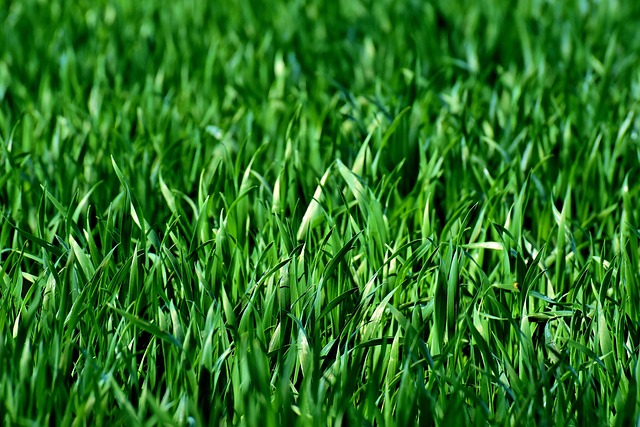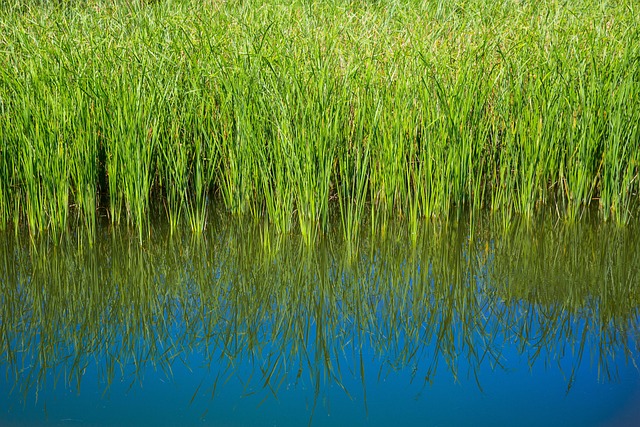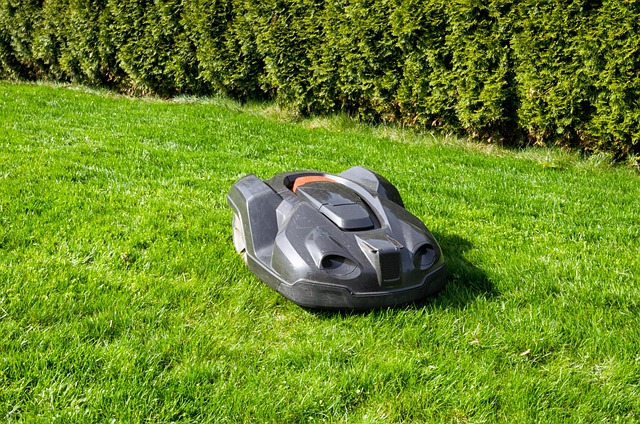Controlling vegetation along rights-of-way in Wheat Ridge is vital for maintaining a well-managed landscape and clear visibility. Professional landscaping teams use herbicide application, adhering to strict guidelines and safety protocols, to minimize environmental impact while maximizing effectiveness. This process involves careful consideration of weather conditions, plant growth stages, and herbicide types. Preparing garden beds includes assessment, cleaning, proper drainage design, and sloping edges; these steps ensure successful, long-lasting results, especially when needing to manage dense right-of-way vegetation. Regular maintenance for vibrant, low-maintenance gardens includes seasonal cleaning, deep watering, balanced fertilization, and targeted herbicide use to control surrounding vegetation, preventing competition for essential resources.
Revitalize your outdoor space with a focus on transforming lawn plant garden beds! This comprehensive guide explores the art of restoration, offering valuable insights into preparing your lawn and implementing effective herbicide application techniques for right-of-way vegetation control in Wheat Ridge. From understanding the process to maintaining new garden beds, discover the steps to create a vibrant, weed-free oasis.
- Understanding Herbicide Application for Right-of-Way Vegetation Control in Wheat Ridge
- Preparing Your Lawn for Plant Garden Bed Restoration
- Restoring and Maintaining Your New Garden Beds
Understanding Herbicide Application for Right-of-Way Vegetation Control in Wheat Ridge

In Wheat Ridge, controlling vegetation along rights-of-way is essential for maintaining a well-managed landscape and ensuring clear visibility for drivers and pedestrians. Herbicide application plays a pivotal role in achieving this goal. It’s a precise method used to manage unwanted plants, often referred to as weeds or invasive species, that can quickly take over these areas. By applying herbicides specifically to the targeted vegetation, while avoiding nearby desirable plants, Wheat Ridge maintains aesthetically pleasing and safe public spaces.
The process involves careful consideration of factors like weather conditions, plant growth stages, and herbicide types. Professional landscaping teams in Wheat Ridge adhere to strict guidelines and safety protocols when conducting herbicide applications. This ensures minimal environmental impact and maximizes the effectiveness of the treatment, leading to long-lasting results in managing right-of-way vegetation.
Preparing Your Lawn for Plant Garden Bed Restoration

Preparing your lawn for plant garden bed restoration is a crucial step to ensure successful and long-lasting results. The first order of business is to assess the current state of your lawn, identifying areas that need significant attention. This involves removing any unwanted vegetation, including weeds and right-of-way species, especially in Wheat Ridge where herbicide application may be necessary to manage dense vegetation. A thorough cleaning and dethatching process will help loosen compacted soil, allowing for better water penetration and nutrient absorption.
Once the lawn is ready, it’s time to design and plan your garden beds. Consider the layout that best suits your space and aesthetic preferences. Ensure proper drainage by slightly sloping the bed edges away from your house or nearby structures. This step will prevent waterlogging and create a healthy environment for plant growth. By taking these preparatory measures, you’ll be well on your way to transforming your lawn into vibrant garden beds.
Restoring and Maintaining Your New Garden Beds

Restoring your garden beds is an ongoing process, especially after initial setup. One crucial step in maintaining a vibrant and healthy garden is managing surrounding vegetation. In areas like Wheat Ridge, proper herbicide application for right-of-way vegetation can significantly enhance the aesthetics and functionality of your garden beds. Regular weeding ensures that unwanted plants don’t compete with your desired flora for essential nutrients, water, and sunlight.
To keep your garden beds in top condition, consider a consistent maintenance schedule. This includes seasonal cleaning to remove debris and spent plants, as well as regular deep watering to foster root growth. Balanced fertilization can also help encourage robust plant development. By combining these practices with targeted herbicide applications, you’ll create an inviting, low-maintenance outdoor space that blooms throughout the seasons.
Restoring your lawn into vibrant garden beds is an art, and with proper preparation and techniques, such as understanding herbicide application for controlling right-of-way vegetation in Wheat Ridge, it can be a successful and rewarding process. By following the steps outlined in this article, from preparing your lawn to maintaining new garden beds, you’ll create a lush and organized outdoor space that enhances your home’s beauty and provides countless hours of enjoyment. Embrace the transformation and watch as your yard metamorphoses into a symphony of color and life!
